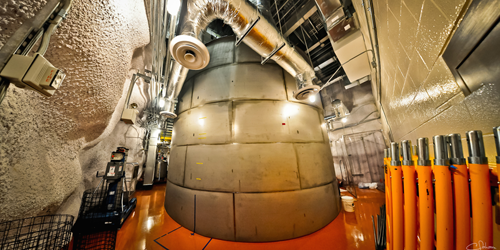The Search for WIMPs Continues
Among the hypothetical particles proposed to explain dark matter are weakly interacting massive particles (WIMPs). According to models, WIMPs and their antiparticles fell out of thermal equilibrium soon after the big bang and ceased being spontaneously produced. The fraction that survived self-annihilation lived on. Two teams, LUX ZEPLIN and XENONnT, have just reported the first results of their searches for WIMPs whose masses exceed the proton’s by a factor of 10 and more, a range that’s consistent with models of cosmic evolution [1, 2]. Neither team recorded a detection. However, their constraints in their overlapping mass ranges are the most stringent yet.
The LUX ZEPLIN and XENONnT experiments both consist of several tons of liquid xenon contained in a tank and monitored by two arrays of photomultiplier tubes. These arrays record the characteristic double light flash of WIMPs striking xenon atoms. The ratio of the two flashes would be different for cosmic rays, muons, or other background particles. To reduce background rates, LUX ZEPLIN and XENONnT are located in deep underground caverns.
WIMPs come in several varieties arising from the theories that begat them. The new limits from LUX ZEPLIN and XENONnT do not eliminate any of the popular varieties. However, the two experiments have years more to run. Already, the upper limit on the WIMP–nucleon interaction cross section is one tenth that of the neutrino–nucleon equivalent.
–Charles Day
Charles Day is a Senior Editor for Physics Magazine.
References
- E. Aprile et al. (XENON Collaboration), “First dark matter search with nuclear recoils from the XENONnT experiment,” Phys. Rev. Lett. 131, 041003 (2023).
- J. Aalbers et al. (LUX-ZEPLIN Collaboration), “First dark matter search results from the LUX-ZEPLIN (LZ) experiment,” Phys. Rev. Lett. 131, 041002 (2023).




